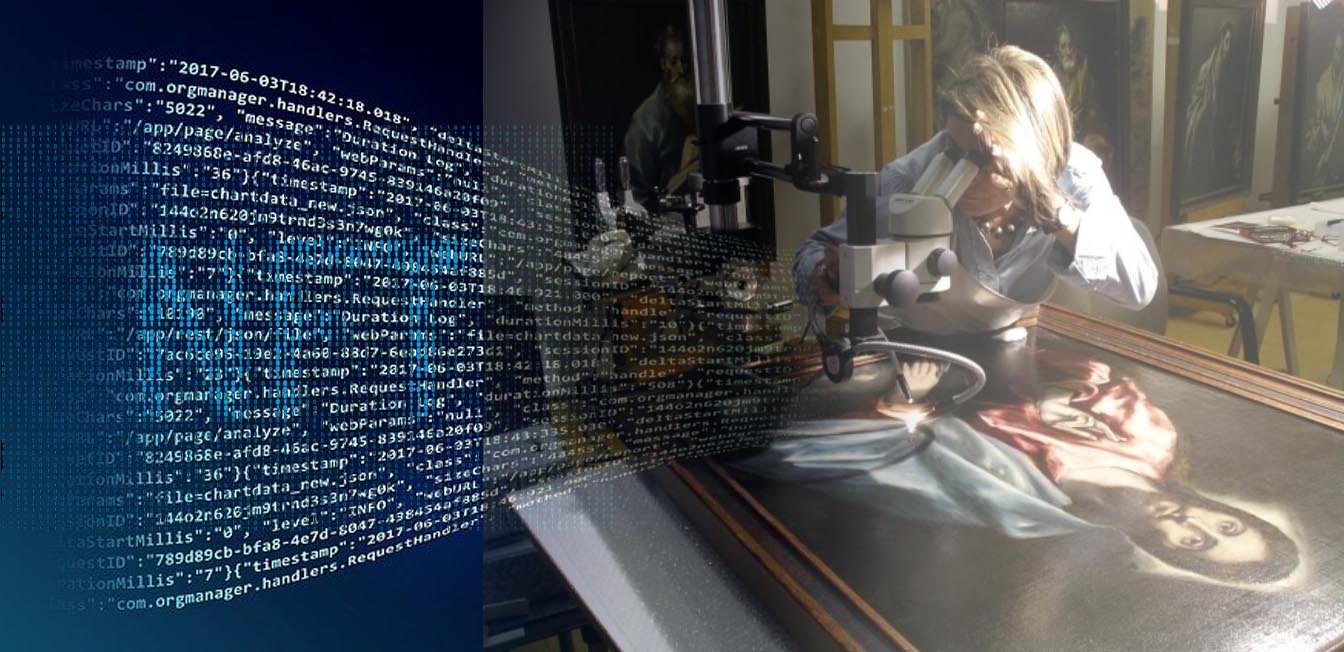NFTS AS CULTURAL HERITAGE
APRIL 19, 2022
We divide cultural heritage into two categories: tangible - everything that is an object you can touch, see or experience; and intangible - heritage that doesn't have a physical entity (such as oral traditions, festivities, etc.).
The vast majority of the world's cultural heritage is tangible, and tangible heritage includes movable and immovable property. Immovable goods are monuments and buildings; movable goods refer to objects.
Why such a technical introduction to cultural heritage, and what does it have to do with NFT art? As an art conservator, I can't help but be amazed and wonder about the future of digital art, its transcendence and to what extent it can be considered part of cultural heritage. Which makes you wonder about the future of art conservation as a discipline?
In the strictest terms, digital art is intangible until it materializes in some medium. So far, I have seen that many artists work in parallel with the digital and the physical realm (which turns out to be the ideal scenario for art and culture), as the physical transcendence of the work contains enough tangible weight to be considered a part of cultural heritage in the long term.
Although considering that an artistic piece is tangible, it does not mean that it will go down in history as cultural heritage per se because of the context, discourse, the recognition of value in the market or popularity. These are some factors that will determine the transcendence of the artist and the work. What will happen in the future? What parameters will be followed? Perhaps it's not so complicated if we are guided only by the artwork's socio-cultural impact, which broke prejudices and opened doors to new ways of consuming art and culture; these could tentatively be a parameter.
But the ripples generated by this impact have already reached a new way of conceiving and consuming art, so it's complicated to predict what digital art is and, more concretely, which NFTS will be chosen as cultural heritage.
However, if we imagine the future of digital art conservation, it may be somewhat similar to what is now being done to rescue 19th century audible quotations and early films; that is, processes will be developed, and devices will be created for their correct preservation, conservation, storage and rescue. So, for those works that are on material support, there will be a guide for whoever has the task of rescuing the digital element and vice versa. As it has always been, it will be the restoration of cultural heritage, an interdisciplinary work.
On the other hand, if it is only kept digitally, the artwork will be available for those who have directed their knowledge to programming and whose digital skills in drawing are so considerable that they may be treading the line that today's art restorer tries not to cross, which is that of forgery or else altering the work with an intervention so well implemented that the history of the piece is lost, leaving it intact without any apparent record of its restoration.
Perhaps the least interested in the future of the artwork as a cultural heritage is the artist; this might be a point of reflection directed more at collectors. How do they intend to conserve their acquired work? Assuming they are genuinely art lovers, they will not want to get rid of a future Rodin, Monet, or an NFT text of the next Cervantes. Let's ponder: How am I going to store it adequately? What role do I have as a collector in the preservation of the piece I have just acquired? Do I have a responsibility? Do I want it to transcend? How do I want it to transcend? Do I want it exhibited? The questioning is important since the collector's responsibility for the work will also be a cornerstone in the transcendence and conservation of art.
For now, there are LEDGERS used for storage, and we will see what emerges for preservation (two very different things).
It is undoubtedly fascinating to imagine the future of crypto art as it opens doors to diverse scenarios that will involve more disciplines than those already included at the time being, but on a socio-cultural level, it will be important. They will be points of analysis and debate, as crypto art, digital art, NFTs, and creative platforms are just the starting.

